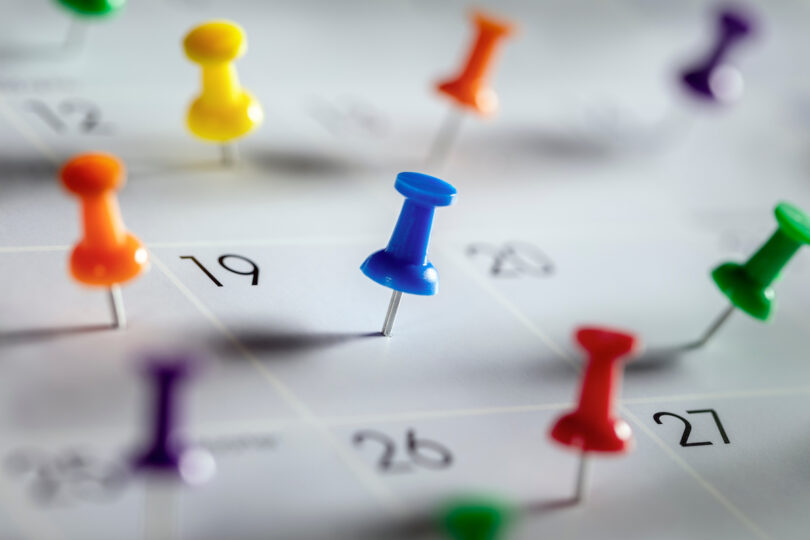Read more articles on health and wellness in the June-July issue of Strategies & Tactics.
My communication roots go back to high school as a newsletter editor and member of the forensics team. I have always loved the integration of words, pictures, and data to help folks understand, grow, and change. My entire life, in fact, has centered on the flow of information.
As a lifelong communicator, I count on three things: thoughtful questions, my gut, and the sanctity of the oxford comma. Recently, I added mindfulness to my list.
Mindfulness, to me, is about being fully in the moment. It’s about paying attention and really being with others, your surroundings, and yourself. Mindfulness is an “awareness that arises through paying attention, on purpose, in the present moment and non-judgmentally,” says Jon Kabat-Zinn, who developed a stress-reduction technique that seeks to integrate the ancient Buddhist meditation practice known as mindfulness into the mainstream of medicine.
Of course, mindfulness doesn’t come easy in the business world. Off-camera video calls without the connection of facial cues and eye contact fill your calendar. Email strings that continue to grow. The number of “top” priorities increase regularly. The avoidance of how your body feels on a Sunday evening as you think about work the next day or the tense shoulders after regular interactions with a supervisor. A seated position for hours on end stagnates the body and brain. Multitasking is the survival norm, not the exception. Working this way — in a frenetic blur — makes it difficult to stay mindful, to stay in the moment.
After taking Kabat-Zinn’s course in reducing stress through mindfulness, being certified as a workplace mindfulness facilitator, and practicing the approach daily, I realized that I had used aspects of mindfulness throughout my career. I just didn’t have the name for or a refined approach to it.
I learned how important consistency is when being mindful. The benefits of little moments of mindfulness add up. Being mindful helps me experience something both intellectually and intuitively — from content to relationships. Being mindful helps you listen to your gut, to signals from your body. That intuitive voice becomes clearer, stronger.
Here are some techniques that professional communicators can use to increase mindfulness and reduce stress:
Structure your calendar.
I joke with my team that I do whatever my calendar tells me to do. It rules me, for better or worse. So, take advantage of it!
To be more present and mindful and to manage my energy, I constantly focus on my calendar. I schedule everything: training, monthly paperwork, meetings, brainstorming time, feedback, etc. To reduce the ricochet of random activities, I bundle like activities togethers such as a series of on-camera, one-on-one check in calls, or writing and editing.
I quit taking “tentative” meetings, either I commit, or I don’t. I mark any key meetings as “out of office” so it shows up pink on my calendar which grabs my attention and helps me protect the time and my energy around it.
Finally, I block two hours each Friday to close out essential tasks and prep for the following week.
By compartmentalizing each entry on the calendar, you can give your entire attention to that task, without being distracted by all the other tasks that will have their turns later in the day.
Question the need for meetings.
I spend more than seventy-five percent of my day in meetings, and often found myself in one meeting still processing the previous one or anxious about the next one. It takes a toll.
Seek ways to be more intentional about meetings by asking: What is the outcome? Who must attend and how can we share outcome to others? What is the best format? What do participants need before the meeting to be successful? How can technology augment, shorten, or replace it? Are they worth it in terms of cost, time, engagement, and outcome? Is one thoughtful monthly meeting better than standing “habit” meetings? Is a meeting being used in place of fixing a broader communication problem?
I also try to apply mindfulness within a meeting by opening with a quiet minute, some stretching, or asking folks to share something that brought them joy that week.
Practicing mindfulness also includes quiet time between the meetings, such as quiet hours when everyone on the team has uninterrupted time, with no meetings, emails, or instant messages to distract them.
Enjoy micro-moments.
Sprinkling nuggets of mindfulness throughout my day helps me clear my head, relax my body, and boost my energy. A walk to the gym in silence as the sun rises is a peaceful way to start the day, immersed in nature and the possibility that the day holds. Other micro-moments include:
- Take lunch away from your computer every day. On complex days I enjoy a quiet, mindful lunch by myself, without any technology.
- Stand outside for five minutes to soak up the sun, feel the wind, smell the flowers, or listen to the birds can increase mindfulness and reduce stress.
- Send a one-sentence email to a co-worker about how you appreciate them.
- Set regular “check-in” calls with people in your network who bring you joy and talk about anything except work. (I enjoy three a month.)
Additionally, I schedule 30 minutes before each session I facilitate to quiet my mind and listen to my body. That way, I can be fully present with the people in the session. When I notice that I’m in a funk, I pick a song and dance or sing it out. Before I log off for the day, I review my calendar for the next day so I can feel prepared, rather than overwhelmed.
To increase mindfulness and reduce stress, try writing down comments you heard or interactions with others that brought you joy that day. Stop checking work email before bed. Instead, meditate for 10 or 15 minutes. This technique has helped me calm my mind and sleep better.
These small, consistent habits help my brain and body step out of the grind — remove the white noise of others — so I can just “be” for a bit. It’s in these quiet, intentional spaces that we can refresh, replenish, and recharge, so ideas can gracefully take shape.
Emily Oehler is a strategist, communicator and coach who helps leaders move organizations forward with intention. She is a director at the consulting firm Guidehouse and writes the leadership-centered blog “Golden Acorns.” Email her at: eoehler@guidehousefederal.com.
[Photo Credit: brian jackson]


There is lots of talk out there about mindfulness these days, and even more little mantras and “thoughts for the day.” This is a wonderful and functional adaptation of the trend to work life and to the workspace itself, Emily. Your paragraph of questions on meetings should be copy-pasted and sent to every manager in America. One addition to your micro-moments ideas: I’ve found that the short walk outdoors is the greatest hack ever for destroying writer’s block or creative block, for unlocking genius, for restoring perspective, and for reawakening to the immediate moment.
Many thanks! And I totally agree with you on the head to toe reset being in nature provides